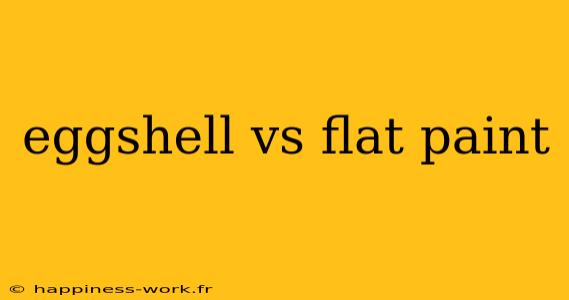When it comes to choosing paint for your home, the finish can be just as important as the color. Two popular choices are eggshell and flat paint. Each has its own unique characteristics, advantages, and ideal applications. In this article, we’ll explore the differences between eggshell and flat paint, and help you decide which option is best for your project.
Understanding Paint Finishes
Paint finishes can be broadly categorized based on their sheen levels, which refer to how reflective the surface appears when light hits it. The main finishes include:
- Flat: No sheen, absorbs light.
- Eggshell: Soft sheen, slightly reflective.
- Satin: Moderate sheen, more reflective than eggshell.
- Semi-Gloss: Shiny and durable, commonly used in kitchens and bathrooms.
- Gloss: Highly reflective, suitable for trim and cabinetry.
What is Flat Paint?
Flat paint is known for its non-reflective finish. It tends to absorb light rather than reflect it, creating a soft appearance that can help hide imperfections on walls. This finish is ideal for ceilings and low-traffic areas where durability is less of a concern.
Advantages of Flat Paint:
- Conceals Imperfections: Ideal for walls with blemishes or uneven textures.
- Easy to Apply: Typically more forgiving during application, making it suitable for DIY projects.
- Rich Color: Offers deep, rich hues that don’t shine under light.
Disadvantages of Flat Paint:
- Less Durable: Not as washable, making it difficult to clean.
- Limited Use: Not recommended for high-traffic areas or kitchens and bathrooms.
What is Eggshell Paint?
Eggshell paint has a soft, velvety finish with a slight sheen, resembling the surface of an eggshell (hence the name). This finish is a versatile choice for many rooms and offers a nice balance of durability and aesthetics.
Advantages of Eggshell Paint:
- Washable: More resistant to stains and easier to clean than flat paint.
- Moderate Shine: Reflects light gently, enhancing color while still hiding wall imperfections.
- Versatile Use: Suitable for living rooms, bedrooms, and dining areas, as well as high-traffic zones.
Disadvantages of Eggshell Paint:
- Can Show Imperfections: While better than flat, it can still highlight surface imperfections if not applied correctly.
- Higher Cost: Generally more expensive than flat paint.
Eggshell vs. Flat Paint: Which Should You Choose?
When deciding between eggshell and flat paint, consider the following factors:
-
Room Type:
- Flat Paint: Ideal for ceilings, bedrooms, and other low-traffic areas.
- Eggshell Paint: Better suited for living rooms, hallways, and other spaces that require some durability.
-
Wall Condition:
- Flat Paint: Great for covering imperfections on rough walls.
- Eggshell Paint: Works well on smooth walls but may expose flaws.
-
Maintenance:
- Flat Paint: Difficult to clean, best for spaces that won’t get dirty.
- Eggshell Paint: Easier to clean, perfect for areas that need touch-ups.
-
Aesthetic Preference:
- Flat Paint: Provides a classic, understated look.
- Eggshell Paint: Adds a slight sheen for a more refined appearance.
Practical Example
Suppose you’re painting your living room. If the walls have visible cracks or textures, flat paint can help mask these imperfections. However, if you expect to host gatherings or have children and pets that may dirty the walls, eggshell paint would be a more practical choice due to its washability.
Conclusion
Both eggshell and flat paints have their own unique advantages and disadvantages. Ultimately, your choice will depend on the specific needs of the room you are painting, the condition of your walls, and your personal aesthetic preferences.
Additional Tips
- Test Samples: Always test a small sample of each finish on your walls to see how they look in different lighting throughout the day.
- Consider Lighting: The sheen can look different depending on the light. Make sure to evaluate your choice in natural and artificial light.
By understanding the characteristics of eggshell and flat paint, you can make an informed decision that enhances the beauty of your home while meeting your functional needs.
This article incorporates insights from various sources and is a synthesis of expert advice to provide comprehensive guidance on choosing between eggshell and flat paint finishes.
Attribution
This article incorporates ideas and guidelines from articles and discussions found on WikiHow. For further reading, you can visit WikiHow: How to Choose Paint Finishes.
